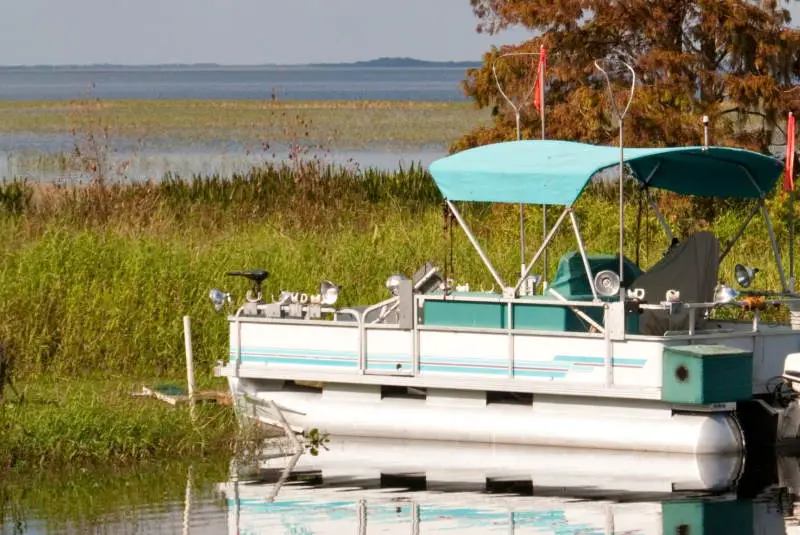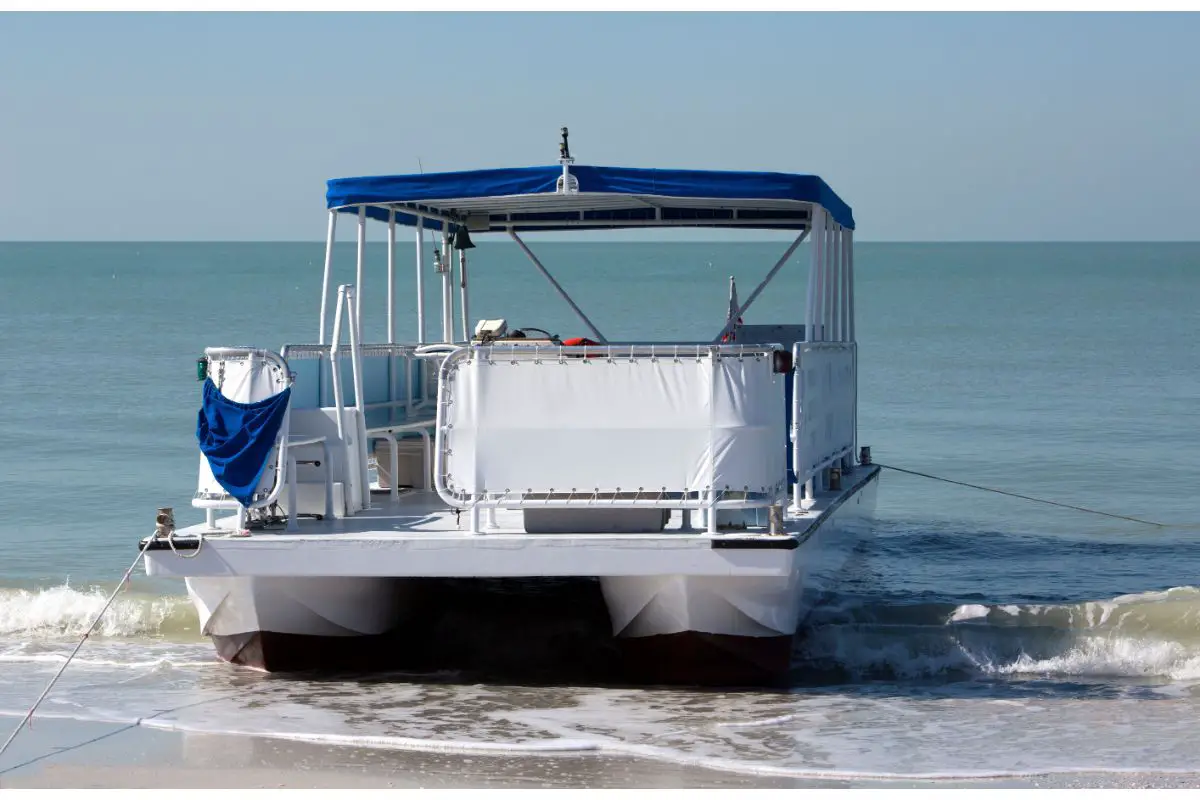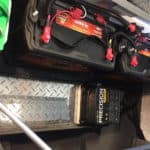If you love angling and have a pontoon boat, you might wonder if upgrading your vessel with a trolling motor is possible. Trolling motors can be great little devices that can help your boat move quietly and swiftly across the water, helping you avoid spooking your next catch.
They’re great for any fishing enthusiast, especially those who need to keep moving their boat while casting. Let’s see if it’s possible to mount a trolling motor on your boat.
Below, we will look at how to mount a trolling motor on a pontoon boat, and if it is even possible in the first place. So without further ado, let’s get into what you need to know about trolling motors and pontoon boats.
Note: most links in this article are Amazon.com Affiliate links, see Affiliate Disclosure, thank you.
Is it Possible to Mount a Trolling Motor on a Pontoon Boat?
The short answer: yes! It is most certainly possible to mount a trolling motor to your pontoon boat; so long as you’ve chosen the proper thrust and shaft length, you’ll be able to perform a successful installation.
Trolling motors could be crucial in helping you bring fish in without spooking them away first and keeping on their tail (pun intended). However, even though trolling motors can make all the difference in the outcome of your fishing, you must select the correct engine for your vessel.
Are Special Mounting Brackets Necessary?
Only trolling motors that are bow-mounted require specialty mounting brackets to install. This is because engine-mount motors clip onto the engine, and transom trolling motors clip onto the transom of your boat.

Generally, when you purchase a bow mount trolling motor, you will need to purchase a bracket. However, in some cases, you can mount your motor directly to the deck of your boat. Mounting the motor generally includes drilling holes into your boat’s deck and installing a plate to connect the motor. This will allow the motor to be removed at your discretion.
Picking a Size
When it comes to trolling motors, the more power, the better. We suggest getting your hands on as powerful of a trolling motor as your budget allows since it’s always better to get more power than you need than to not have enough power.
As a general rule of thumb, for the bare minimum, you will need a thrust of around 5 pounds from your engine to move every 400 lbs of weight on your boat.
Unlike the standard onboard engine already on your pontoon boat, the power of a trolling motor is measured using pounds of thrust instead of simply by horsepower. Trolling motors become more powerful when they have more thrust pounds on them.
Trolling motors also come in a range of voltages – 12V, 24V, 36V, and 24/36V – which can make matters a little more confusing. The higher this voltage rating is, the more power the propellor has available to move your boat across the water.
For instance, if you use a 36V trolling motor with 112 pounds of thrust, it will be far more powerful than a 12V variant with just 55 pounds of thrust. That being said, for almost every application, we recommend 24 volt 80-pound trolling motors, and here is a link to our article explaining why.
About Batteries
Trolling motors need electricity to create the power required to move your boat, so they need their own batteries to function. While it certainly is possible to utilize the battery that is already on your vessel – which will only really be used for starting the outboard engine anyway – doing this will quickly drain its reserves.
This may result in a vessel that won’t start up after just one fishing day. But don’t worry, there’s a simple solution to this dilemma: deep-cycle batteries.
You can install one of these unique batteries specifically for the trolling motor on your boat to provide it with the power it needs. This is especially useful if you’re using a trolling motor with a higher voltage or if you plan on using the motor for extended periods. You should also consider keeping several batteries nearby to ensure the motor is always running.
Recently lithium batteries have become very popular. After a lot of research, we narrowed it down to the Amperetime 24 volt 100 amp battery. This battery had great stats and good reviews. The performance of this battery has lived up to everything we were hoping for.
After 38 uses in 11 months, we can verify that is is a solid choice. Don’t forget, to get the most out of your lithium battery you will need a lithium-compatible charger. Here is our install video for the lithium battery. Also, check out the install videos of other components.
Best Trolling Motor Mounting Places
You can choose from three potential mounting areas on your pontoon boat – the transom, bow, or engine. Each location has its pros and cons, and we’ll discuss them more now.
Transom Mount
Transom motors are quite popular amongst small boat owners since they are more compact, are easier to install, and are more budget-friendly than some of their counterparts. To install transom motors, you simply need to clamp them to the stern of your boat, and you’ll be good to go.

The downside with transom motors is that they do not offer as much maneuverability, which can be inconvenient depending on your preferred surfing location. Remember that if you are on a budget, you can modify a transom mount motor by reversing the head and using it on your bow with a bracket.
Finally, when you mount your trolling motor on the boat transom, avoid placing it too close to the fish finder transducer. The electric motor in a trolling motor can generate an electric field that disrupts your fish finder signal.
Bow Mount
Trolling motors that are bow-mounted are the most popular and our top pick since they offer a great level of steering control when maneuvering through the water, especially in comparison to transom motors. This increased control comes from bow motors pulling boats through the water rather than pushing them.
However, they are generally pricier than other options and take up more space on your boat.
Engine Mount
As the name suggests, engine-mount trolling motors are mounted right onto your vessel’s engine. To be more specific, they are mounted to the cavitation plate. These are some of the most convenient trolling motors, as they take up virtually no space on your boat.
With that being said, engine mount trolling motors can be quite expensive. They can also be quite challenging to control, so you should only consider one if you are an experienced sailor who knows how to control your boat.
Engine-mount trolling motors are designed to be used on inboard outdrive motors, but we have seen them used on traditional outboards.
When looking at these three types of electric trolling motors, you might want to consider how you plan on operating your motor. If you have a basic motor without a remote, mounting a pedestal seat next to your motor is a good plan to add to your project.
Wrapping Up
A trolling motor can be a fantastic investment if you want to amp up your pontoon boat a bit. Rather than scaring all of your potential catches away with a loud engine, you’ll be able to swiftly make your way across the water while making as little sound as possible, improving the overall quality of your fishing trips. We hope this guide has helped you know what steps to take with a trolling motor and your pontoon boat. Good luck!
Check out our article How To Use an Electric Trolling Motor For Pontoon Boats
Here is a video covering many common issues when installing a bow mount trolling motor.



